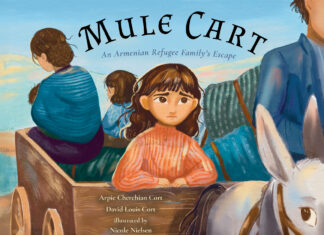Do we honor the dead or the corpses? I’m not talking about those poppy fashion accessories worn by the BBC’s clones, or PR Dave’s obscene bit of crimson Photoshopping, but the real, actual remains of the human beings slaughtered in the Great War of 1914-18. And, in this particular case, I’m talking not of the soldiers but of the civilians buried in 33 graves which I looked down upon last week from a windy hilltop beside the old Roman city of Byblos in Lebanon. Beneath those tombstones lie the bones of some survivors of the greatest war crime of that titanic conflict, the Genocide of a million and a half Armenian Christians by the Turks in 1915. They died in one of the huge orphanages opened for thousands of children amid cholera and disease by European doctors and NGOs after the Great War ended, and were buried in the orphanage grounds.
Many of them saw their parents slaughtered in front of them, but escaped the massacre only to die in Lebanon. Some lived on to work among the orphans and died of old age. But they are the ‘honored’ dead, as surely as the soldiers who lie today in the cemeteries of the Somme and Verdun and the graves of those who endured the conflict. Or are they? For these individual Armenian graves, most of them bearing the names of the survivors, are soon to be disinterred and buried – mixed together – in a ‘common grave’ beside the nearest Armenian church. Their names already appear on a marble stone near the hole where their bones will be placed — but their individuality will disappear, skulls and backbones and femurs jumbled together. What is left of their bodies will have lost their uniqueness.
Worse still, their own Armenian church which “protects” the old orphanage site, is to rent the land to a company that plans to construct a beach-front boutique hotel of wooden villas and, while the land where the graves now stand cannot be used for construction – it is too near the ancient Roman city – it will be landscaped and used, it now seems, for wedding photographs. The brides and grooms will not know whom they have displaced.
But Vartan Avakian will know. He took me to Byblos to show me the tomb of his own great-grandfather Hagop in this very cemetery, and Hagop’s remains will be among those disinterred. “Those who escaped the mass graves of our Genocide should not be moved into another mass grave,” he said bitterly. Vartan and seven other Armenian friends have been hunting through local construction documents and discovered that the exclusive resort will be called the Diplomatic Club. So poor old Hagop, who witnessed but survived the Genocide at the age of 21, must make way for the wealthy company that will rent this land from the church for its privileged hotel guests.
The Armenian church can say — justifiably — that the names of the dead will be more greatly honored, because their cocktail of bones will lie beside an Ottoman building that now houses a magnificent museum of the Genocide, containing a photographic record of the Armenian Genocide — the first genocide of the 20th century. Pictures of the dead hang in corridors haunted by most beautiful Armenian liturgical church music. “Remember!” it says in Armenian on a nearby wall. “Life is short, death is real, eternity is immortal.” Which, I suppose, is the Armenian version of our own remembrance of those who grow not old as we grow old.
But moving the dead worries me. True, in 1918 the Armenian survivors carried some of the bones of their own dead from the Syrian Desert to a chapel at Antelias, north of Beirut, where they can be seen to this day. I have myself dug the skulls of dead Armenians from the killing fields of northern Syria — originally left by their Turkish murderers to be covered by the waters of the Khabur River — and given them to the priests of the genocide memorial church at Deir ez-Zor. But these bones had been lying unknown, without any Christian grave. They were placed in the crypt amid other remains where, alas, they were discovered by Islamist fighters last year — and hurled into the street before the church was dynamited. True, graves of British soldiers on the Somme were removed to another cemetery when a new French motorway route to the Channel was under construction not long ago. But they were reburied with honor under their own individual tombstones and their disinterment was in the interest of a project that would benefit a new generation of humanity.







